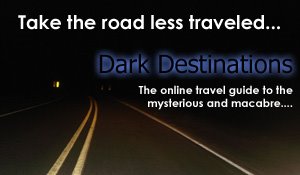
On this date in 1809, Edgar Allan Poe was born in Boston, Massachusetts. By his death on October 7, 1849, Poe's tales of madness and horror had left a permanent park on the literary world, which has resulted in a reverence today that was absent during his career. Indeed, he is even credited as single-handily inventing the detective-fiction genre with the publication of
The Murders in the Rue Morgue.
Poe led a fairly transient lifestyle as evidenced by the many cities holding celebrations today in his honor and attempting to claim the ownership of "Poe's Hometown". Interestingly enough, Boston has not traditionally been one of these cities, despite being the city the author was born in. That is about to change. In addition to the city's main intersection of Boylston and South Charles will soon be officially named as "Poe Square," Boston College held a two-night event over last week to celebrate the life and works of their hometown author.
In Richmond, Virginia,
The Poe Museum is holding a 24-hour birthday bash that got underway in the early morning with a séance attempting to contact his spirit. In addition to the museum's exhibits and even birthday cake, the museum is also hosting Segway tours of Poe sites, a later candlelight walking tour, and reading of Poe's works.
In Philadelphia, Pennsylvania, the
Edgar Allan Poe National Historic Site closed its doors in December in order to prepare for this bicentennial event. The new exhibit opened this weekend with new lighting, carpets, and artifacts to celebrate the opening of their new exhibits that explore the author's life.
Over in The Bronx, New York, actor Tristan Laurence will be assuming the identity of Poe for a series of readings of the author's works - reportedly even taking questions from the audience. The event will be hosted at the
Poe Cottage.
Finally, the
Edgar Allan Poe House and Museum in Baltimore, Maryland is teaming up with the Commission for Historic and Architectural Preservation and the Baltimore City Department of Planning for a series of events throughout the rest of January. These events include performances by actor John Astin (who adopted Poe's persona for the critically acclaimed and highly successful play,
Edgar Allan Poe: Once Upon a Midnight), a theatrical performance of Poe's
Hop Frog, and much, much more. The events will all be hosted at the
Old Westminster Burial Ground, where Poe was buried following his death.
Of course, the cemetery is also the site of the annual early morning pilgrimage by the so-called "Poe Toaster" who traditionally leaves three red roses and a half-bottle of Cognac on the author's grave - successfully eluding the various spectators who gather to watch. The news from Baltimore this morning reports that the tradition continued again this year, though the Toaster did not leave a note (as they have done in the past) to acknowledge the milestone anniversary.
-Casey H.
 On January 26, 1988, Andrew Lloyd Webber's The Phantom of the Opera made its Broadway debut at the Majestic Theatre in New York City, New York. The debut followed its successful London, England launch at Her Majesty's Theatre a little over a year prior. The Majestic Theatre was built in 1927 and has been the site of countless productions, but few have left its mark quite like The Phantom of the Opera.
On January 26, 1988, Andrew Lloyd Webber's The Phantom of the Opera made its Broadway debut at the Majestic Theatre in New York City, New York. The debut followed its successful London, England launch at Her Majesty's Theatre a little over a year prior. The Majestic Theatre was built in 1927 and has been the site of countless productions, but few have left its mark quite like The Phantom of the Opera.











